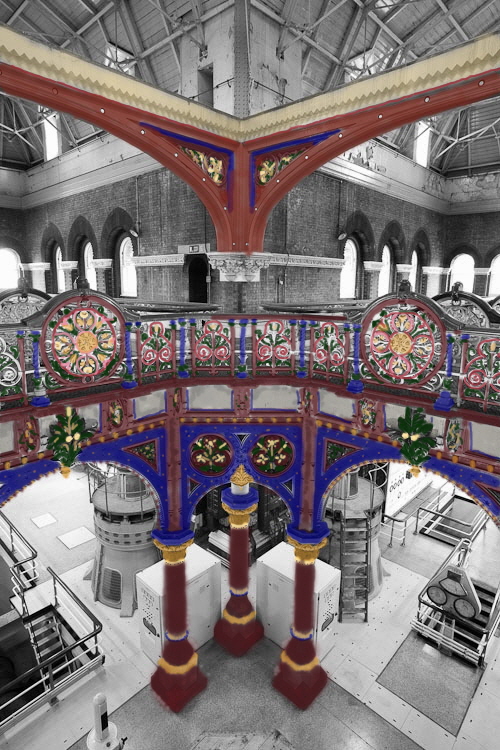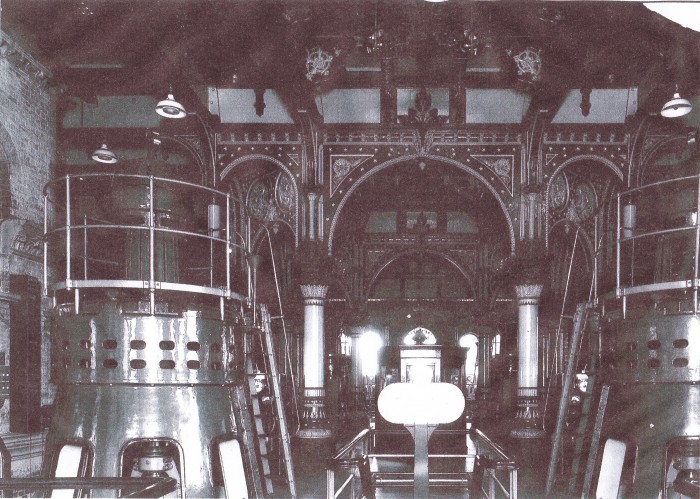Abbey Mills Pumping Station
History & Context
Abbey Mills Pumping Station was built between 1865-1868 to the designs of Joseph Bazalgette and Charles Driver. It has been hailed as the ‘Cathedral of Sewerage’. It is a Grade II* listed building, and although the beam engines have been removed it still functions as an operational station. It is located on the Greenway – the pedestrian track which runs through the Olypmic site. As part of the preparations for the 2012 Olympics, Thames Water is planning to improve its visitor facilities and recreate a section of the original internal painted decoration of the highly flamboyant Italian Gothic Style cast ironwork arcading.
|
|
Research Brief
Research was required to establish the exact appearance of the original decoration. There was photographic evidence to suggest that the original schemes was ornately painted and gilded. A black and white photograph taken in the 1930s indicates the complex polychrome and gilded decoration in existance at that time.

Located in Abbey Lane, London E15, the building is a sewerage pumping station, designed by engineer Joseph Bazalgette, Edmund Cooper, and architect Charles Driver, it was built between 1865 and 1868 after an outbreak of cholera in 1853 and “The Big Stink” of 1858. It was designed in a cruciform plan, with an elaborate Byzantine style, described as The Cathedral of Sewage. The pumps raise the sewage in the London sewerage system between the two Low Level Sewers and the Northern Outfall Sewer, which was built in the 1860s to carry the increasing amount of sewage produced in London away from the centre of the city.

